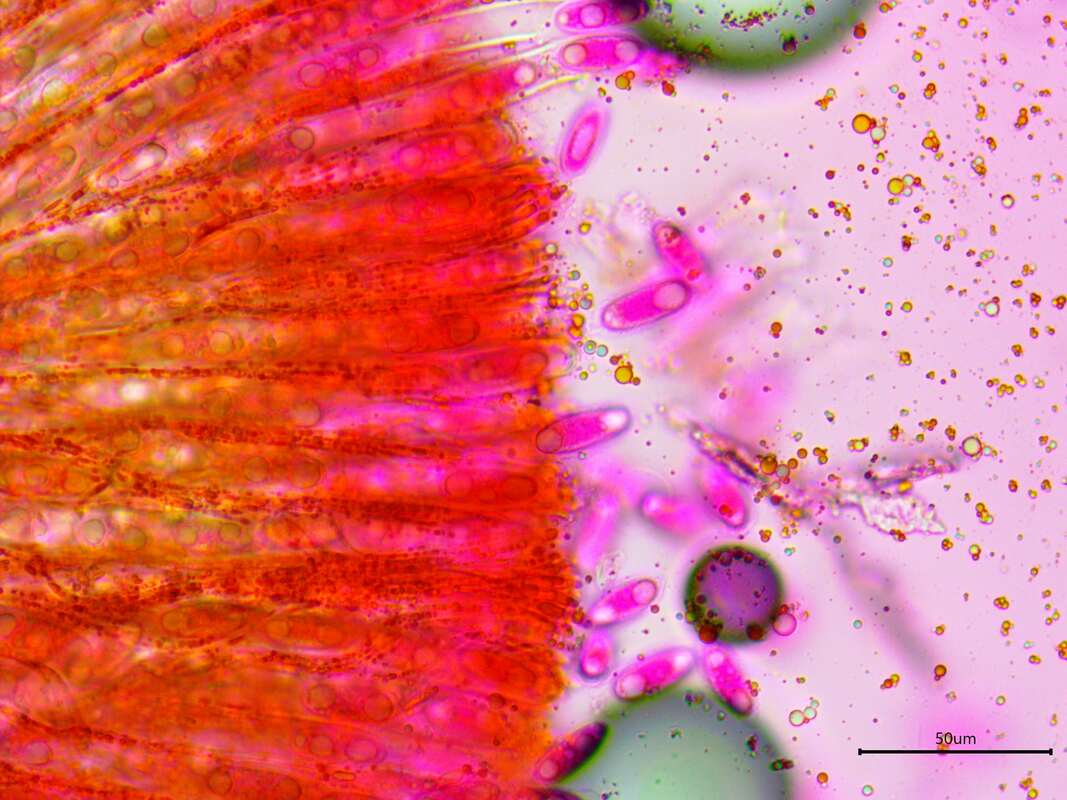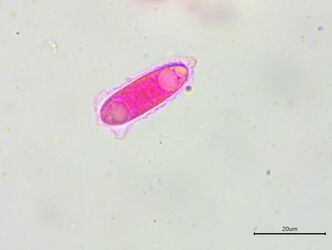|
MycoBank Taxonomy: Fungi, Dikarya, Ascomycota, Pezizomycotina, Pezizomycetes, Pezizomycetidae, Pezizales, Sarcoscyphaceae, Sarcoscypha I wanted to start the 1001 Mushrooms Project on the right foot by eating a morel. However, it is fitting that Sarcoscypha dudleyi was my first. This is one of the very first mushrooms that fruit in the spring in northern United States. Seeing this red dollop on the forest floor is a little unbelievable after six months of white snow and brown plant debris. Furthermore, S. dudleyi represents the bizarre culinary possibilities of fungi as well as the strange mushrooms that will constitute a large portion of the 1001 mushrooms that I eat. According to Michael Kuo at MushroomExpert.Com, Sarcoscypha dudleyi is widely distributed east of the Rocky Mountains. However, in most field guides it is falsely treated as S. coccinea. S. coccinea is identical to S. dudleyi but is only found in the Pacific Northwest. S. austriaca, on the other hand, is identical and is also found in eastern North America. So for this specimen, I was able to rule out S. coccinea with certainty but had to use a microscope to look at the spores to determine that it was S. dudleyi and not S. austriaca. It will be interesting to find S. austriaca in the future and to test whether there is anything appreciatively different about the taste of the two species. With microscopy, I could determine that this species was Sarcoscypha dudleyi and not Sarcoscypha austriaca, the other eastern scarlet cup fungus. Note the rounded ends of the spores, the two polar oil droplets, and the mucilage sheath around the spore, which are all characteristics of S. dudleyi. The truth is that I collected this specimen not knowing that I was going to eat it. Various sources give it a lackluster edibility score of "nonpoisonous". Ascomycete Fungi of North America reports S. austriaca as "nonpoisonous, but not recommended" and have no edibility information for S. dudleyi (possibly because it is less common). Other online sources write that S. dudleyi it is said to be edible but offer no firsthand experience with the species. With this information in hand, I felt like a small tasting would be safe. I prepared the fungus by rinsing off the dirt, chopping it into thin sections, and sautéing it with a little oil, finally topping it with some salt to brighten the flavor. The flavor and smell were both decidedly mushroomy, in a subtle, not-unpleasant way. Over all, it was very mild. The few cups I collected turned into a much smaller quantity of food. It really shone as a garnish, though. I'm excited to keep experimenting with this atypical edible mushroom. However, I would recommend caution if you are going to try this species. While the species group is easily identified and I had no adverse reactions to eating a small quantity of this fungus, it is clearly untested in large quantities. Comment below and let me know if you have tried this fungus and what your feelings on it are! SpecimenACD0126, Mushroom Observer #364292; 8 April 2019; Dane Co., WI, USA; leg. Alden C. Dirks, det. Alden C. Dirks, GenBank MW464412 (ITS rDNA), MICH340468. ReferencesBeug, M. W., Bessette, A. E., & Bessette, A. R. (2014). Ascomycete Fungi of North America - A Mushroom Reference Guide. University of Texas Press. Kuo, M., & Methven, A. S. (2014). Mushrooms of the Midwest. University of Illinois Press. Online Resources
0 Comments
Your comment will be posted after it is approved.
Leave a Reply. |
PermalinksProject Introduction Top EdiblesHericium coralloides
Laetiporus sulphureus Morchella americana Polyporus umbellatus Suillus ampliporus Archives
April 2023
Categories |
|
|
Terms of Use, Liability Waiver, and Licensing
The material on aldendirks.com is presented for general informational and educational purposes only, and under no circumstances is to be considered a substitute for identification of an actual biological specimen by a person qualified to make that judgment. Some fungi are poisonous; please be cautious. All images on this website are licensed under Attribution-NonCommercial-NoDerivatives 4.0 International (CC BY-NC-ND 4.0). |


 RSS Feed
RSS Feed




